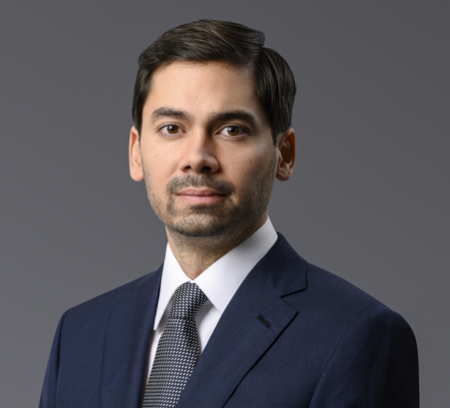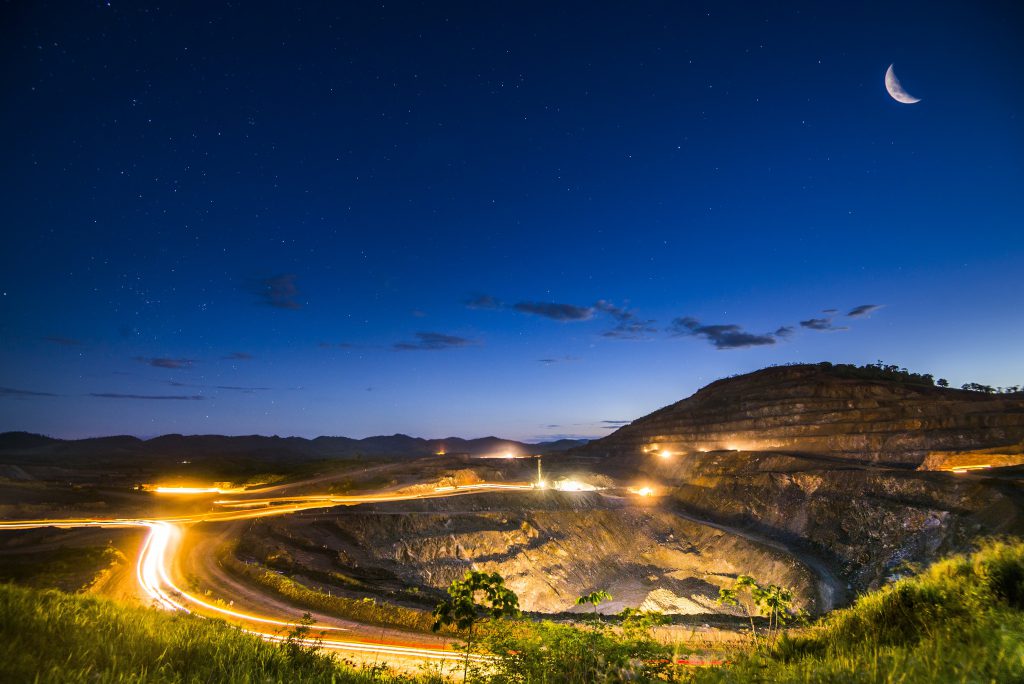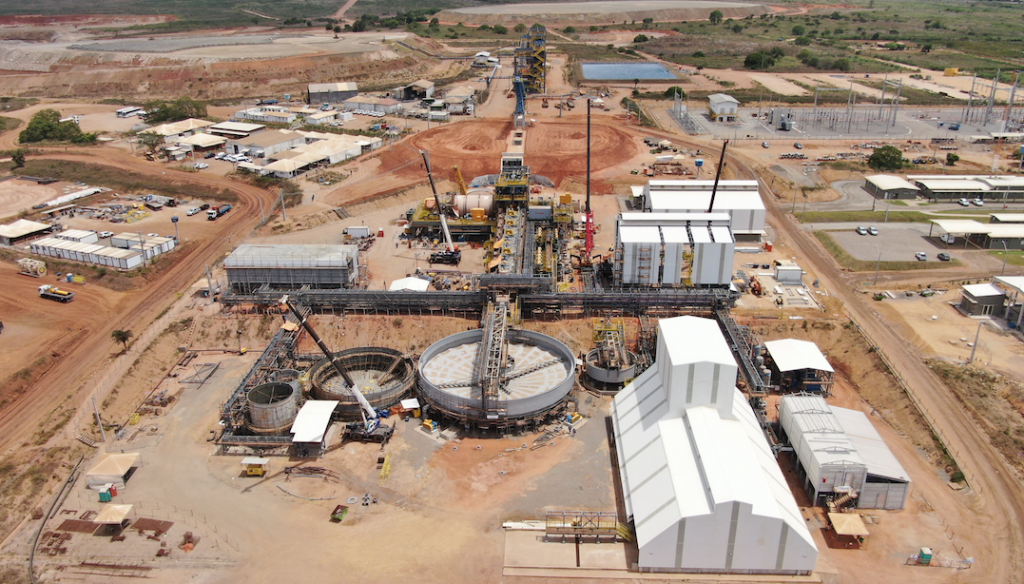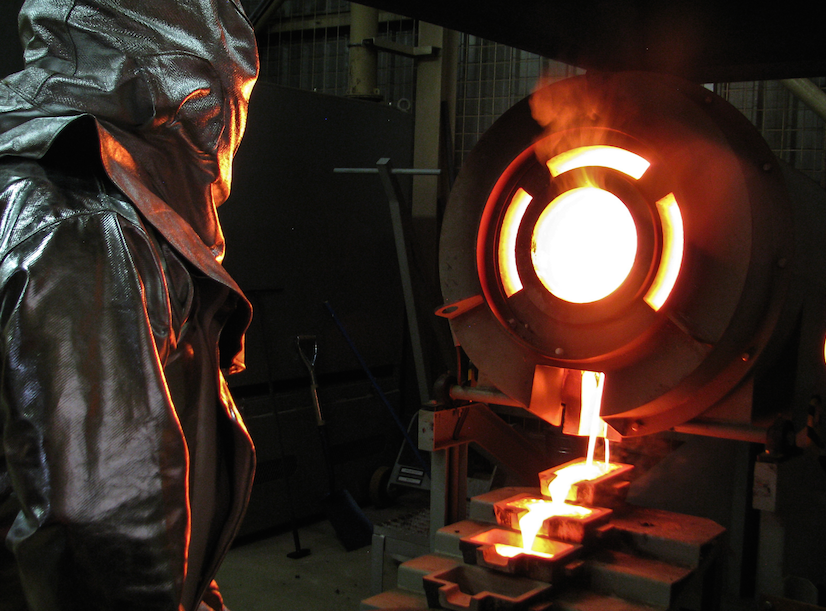Appian CEO on principles for mining investment
On Monday, Appian announced a significantly larger fund – $775 million and oversubscribed – which, despite the disruption caused by covid-19, has already deployed 40% of its capital.
Appian’s founder and CEO Michael Scherb is an Austrian national, and started his career structuring foreign investment into China before joining the mining team at JP Morgan Cazenove in London. He worked on deals as diverse as Rio Tinto’s 2008 defence against a hostile BHP, a $1 billion Istanbul gold mining IPO, M&A for France’s Areva in Africa, and a bond offering for Russian diamond giant Alrosa.
MINING.COM checked in with Scherb for an update on the firm’s investments, strategy and operations in the midst of a global pandemic, and the rise of environmental, social and governance (ESG) focused investing.

Describe your investment philosophy. Are you targeting different commodities, stage of company, regions, size of investment?
“At the core of our philosophy, is long-term through-the-cycle, technical arbitrage in a hands-on active management investment style. We do this with a best-in-class team which has deep technical expertise to operate projects if needed, and long-term, 10+ year, capital behind us.
“We have great respect for the technical side of mining and rebuild every asset we take a close look at, through a first principles basis, over the course of our intensive due diligence process.
“The mismatch in our sector is driven by a long lead time capital intensive industry being backed by short-term, almost VC type capital which expects good news every month or quarter. This creates some of the inherent cyclicality and doesn’t provide management teams with enough time to carry out through-the-cycle strategy.”
“It forces CEOs to do the wrong things at each point in a cycle and to cater to research analysts, attend far too many conferences and publish “no-news” press releases when they should have the long-term support to focus on truly creating value at the asset level.”
“We have great respect for the technical side of mining and rebuild every asset we take a close look at”
Appian CEO Michael Scherb
What is your take on the old investment mantra of diversification?
“Diversification, whilst important, is not a superior guide for our strategy as an over relied upon aspect by most investors, and is a slightly anachronistic theme. We are more aligned to the value investing or even the endowment approach as it relates to high conviction concentration, but naturally have some specific unique facets such as our active management approach.
Remember that everyone at Appian invests relatively large amounts of their own personal capital into the Funds, so there is very close alignment with our investors.”
Our rule of thumb is that per each fund, we rigorously scour the world, choose the 6-8 best ideas and focus our full effort and every sinew of fibre into those, to make them successful investments for our investors.”
How have you managed as an investor and CEO to Appian and your portfolio companies through covid-19?
“Firstly, we are respectful of the opportunity to test ourselves during some truly unusual and challenging times. What a unique opportunity to see what your business is really made of. It was an accelerated PhD in crisis management, and we will all be better leaders because of it.
“Covid is a unique situation to lead a business through and some lessons learned in leadership, if useful to anyone else, were as follows:
- Over-communicate – a unique challenge was not having anyone in the office, but communicating through a new medium. Not being able to meet face-to-face meant an overload of calls and encouraging everyone to communicate their ideas and concerns in a more active manner rather than suffer in silence;
- Communicate transparently and openly with staff about the issues and challenges ahead, and If things look bleak, don’t hide that but do give some sense of certainty, hope and the plan forward;
- Prioritize people and demonstrate empathy to their own challenges;
- In crisis mode, especially in the beginning, it’s easy to get tunnel vision and slip into problem-solving mode, but don’t lose sight of the strategic bigger picture;
- Assist people and partners when they need it the most.
“We are respectful of the opportunity to test ourselves during some truly unusual and challenging times. What a unique opportunity to see what your business is really made of”
“Despite all the ills brought upon society by covid-19, the pandemic has proved to be a great accelerator of numerous social trends, including the technology adoption, de-carbonization and electrification, a greater focus on healthcare and a generational shift from wealth creation to wealth distribution, which the Metals and Mining sector will continue to benefit from.”
What advice would you have for the retail investors?
“Seek alpha instead of beta – choose asset quality over commodity. Be patient long-term through-the-cycle investors, demand good corporate governance, and don’t assume that management and boards are aligned with you.
“Shift focus from how much you can make to how much you can lose, and the rest will fall into place.”

What do you make of the current macro-economic commodity environment?
“To say that this was a remarkable year for investors is an understatement. We witnessed the third-fastest bear market and the fastest recovery in our history, taking just 22 days for the S&P 500 to lose 20% of its value and less than six months to return to its pre-crisis peak.
“As part of a once-in-a-century shock, systems, investment strategies and business models were put through a significant stress test. Metals and mining, as the first link in the industrial production chain, and an essential business, did not stop operating, and the Appian business model of seeking asymmetry through technical arbitrage proved highly robust throughout, while simultaneously advancing a number of portfolio divestments.
“The commodities market is witnessing the sharpest rally in more than a decade, with lead indicators beginning to point to the potential of an elongated up-cycle including the start of an intertwined feedback loop between commodities, the dollar and emerging-market growth that has driven past structural bull markets.
“At its core, is policy-driven demand focused on wealth redistribution, renewables and, with commodity supply-side spending outside of renewables still at very low levels, this demand growth should keep markets tight for the foreseeable future. From China’s new five-year plan to Europe’s Green Deal to Biden’s stimulus plan, policies abound with the potential to turbo-charge commodity demand, which is significantly out of synch with the supply side response.
“There is also a view that disinflation and deflation will shift to inflation, and US treasury nominal 10-year yields are headed higher, with capital likely to flow into emerging markets, materials, industrial markets, cyclical markets and importantly, commodities. This rotation is underway. In a world where industrial demand is rising again, and inflation is coming to the forefront, commodities tend to do well at this part of the cycle, and it’s highly likely that generalists and macro asset allocators will increase relative exposure over 2021, further increasing valuations.
“We see a lot of the headline themes on electrification, including numerous attention-grabbing soundbites from politicians, but it doesn’t appear that they have really done the math. EVs require 4x more copper per vehicle than fossil-fueled cars, and just replacing the world’s fossil-fueled cars with EVs by 2050 would use up all of the known copper reserves globally! Essentially, we don’t have enough metals to do the job.”

In our last interview, you talked about the necessity for the mining sector to incorporate more second-level thinking. Has this improved since we last spoke and have investors become more attuned to cycles?
I’m caught in two minds on this! It would certainly make the sector more efficient, but at the same time Appian would have fewer investment opportunities to take advantage of.
Regarding your question on cycles, it’s virtually impossible to time cycles with great accuracy. What you can do is to note extremes, so when the pendulum is at its most extreme, you can diagnose certain guideposts before forces pull it back. As ever, the markets are only in perfect equilibrium for a short period of time before the pendulum rushes by in the opposite direction, due to human nature to over-correct.
An intellectually intriguing question is if recessions themselves across global economies should be prevented or allowed to happen. For example, mini-cycles may be healthier than deploying fiscal measures to prolong an upcycle until a huge crash is unavoidable.
The commodity sector is also one in which the concept of reflexivity plays an important and oftentimes damaging role. Reflexivity is the theory that a two-way feedback loop exists in which investors’ perceptions affect that environment, which in turn comes back around to change investor perceptions. Just look at the false lithium dawn from a few years ago.
You can counteract some of these forces with long-term capital and patience, thereby not rushing with the herd or through second-level thinking which allows you to see through a lot of the immediate noise and react, not to primary impacts, but after studying the secondary and tertiary expected counter-reactions.
Do you only invest into equity or across the capital structure into royalties and credit as well?
We look for the best risk adjusted returns for our investors across the sector. We are always available to have a discussion with prospective companies around tidying up the capital structure, building extra cash reserves or providing that final completion capital required for a project, including through royalties and credit. The benefit the companies have by taking Appian’s credit is that there is a long-term partner to discuss detailed technical challenges and optimizations as well as a deep pool of financial talent available to assist where required. As with our equity approach, it isn’t just capital we are providing.
Has ESG become more of a thematic for you?
It most certainly has, right from the investors in Appian down to the communities in which our portfolio companies operate.
The push for a more inclusive form of capitalism can take many variants, and ones typified by over-arching themes of stakeholder capitalism should certainly be applauded. While profits are a primary goal, the mining sector knows that unless all the stakeholders are aligned, that goal isn’t achievable.
In fact, I would go so far as to say, the mining sector is baffled as to why it is cast in such a negative light when it has been practicing a form of stakeholder capitalism longer than nearly all other sectors. There are many things other industries can learn from the mining sector and it’s really up to our industry to either lead from the front or continue to avoid putting its head above the proverbial parapet.
We are obviously believers that mining is part of the solution rather than the problem. The mining industry is taking strong actions to make ESG a focal point of strategy, rather than play defense on this important topic. Major listed diversified miners have divested coal assets, community relations have become increasingly important to boards and improved corporate governance is becoming a higher priority.
The mining sector is leading the charge in providing the raw materials for the clean energy transition, and the quantities of minerals used in EVs will be dwarfed by the push for grid-scale batteries to make wind and solar usefully reliable.
“The Appian Way Charitable Foundation was also the main forum for us to assist our most vulnerable stakeholders through the pandemic”
Those solar panels and wind turbines also entail using an average of 10 times more primary materials to produce the same energy output compared to fossil fuel consuming technologies. The point being that the miners who can operate in a sustainable way and produce commodities that make the world a cleaner and better place will be the winners in both absolute and relative terms.
A few years ago, we established the Appian Way Charitable Foundation, which works with each of our portfolio companies to maximize the social and financial impacts in the local communities in the regions where we operate. For example, we recently launched an initiative which will train approximately 120 teachers in Alagoas and 35 teachers in Bahia. The estimated total number of students who will benefit is around 8,000, however the gains are expected to be long-lasting for Brazil.
The Foundation was also the main forum for us to assist our most vulnerable stakeholders through the pandemic, and in Brazil, for example, more than BRL1.6 million has been donated so far in covid-19 relief initiatives to support the local communities. These included supplying rapid test kits, PPE, thermometers and food. Every effort was made to source as much equipment as possible from local manufacturers, and around 37,500 people directly benefitted from these relief measures.
Has corporate governance improved in the junior mining sector?
Not really unfortunately, and it is part of what is harming the sector’s reputation from the generalist investor’s perspective.
It’s fascinating that many corporate managers deplore governmental allocation of the taxpayer’s dollar, but enthusiastically embrace their own misallocation of the shareholder’s dollar, and unfortunately the sector hasn’t delivered the returns relative to the perceived risk that generalists believe they are taking on.
It is what it is, and leaves more inefficiency for long-term capital to benefit from.

How has the team evolved and what kind of people do you hire into Appian?
Our business model is to assist our portfolio companies with industry leading processes and talent across technical and financial disciplines. This is predicated on a large, industry-leading team across everything from geo-stats to mine scheduling to TSF design. I am also a firm believer that the best organisations are ones which are in constant movement, evolution and never content with what they have achieved.
We are now 37 investment professionals, overseeing 4,650 individuals with offices in London, Toronto, Lima, Belo Horizonte, Sydney, technical personnel in Mexico and South Africa, and assets in North and South America, Africa and Australia.
The Appian Senior Advisory Board and other affiliated Senior Advisors offer a diverse collection of insights with professionals including ex-senior management of BHP, Xstrata, Barrick, Petrobras, JPMorgan, Fortescue along with thought-leading investors, politicians and economists who we enjoy discussing all manners of strategic matters with.
Fund I was really about proving out a certain investment model which has succeeded. Fund II continues Appian’s evolution and transition to a full operating investor.
For example, we have recently brought on board a COO for the whole Appian Group, who was previously COO of Barrick and Buenaventura, and we have also codified all our best-in-class operating principles for our portfolio companies, to smooth the ramp-up curve, develop a culture of accountability, and operate as a best-in-class Appian portfolio company from day 1.
We look for all types of characteristics within potential new joiners. Ultimately, we do like high character, ultra-competitive, driven people with a technical slant. Another important characteristic is people who have an insatiable intellectual appetite, and our best performers seem to have a type of restless energy as well.
We have a fun, yet demanding environment, and I believe strongly in training for the team, which includes language classes, teach-ins by thought-leaders and an upcoming partnership with Oxford University fellows on individualised leadership training. It’s a perpetual process, but investing in your people is the safest bet you can make.
What are you looking for in a new project and how can someone get in touch with you?
We are unlike most financial partners in that we provide not just capital, but industry leading technical and financial advice, and we bring our large network to assist a mine into production. We can also invest at an earlier stage than most of our peers, particularly given the longer fund life benefits we have, but we are flexible from 4 years to production through to optimization of producing assets.
“We look for all types of characteristics within potential new joiners. Ultimately, we do like high character, ultra-competitive, driven people with a technical slant”
We look to invest at least $100m-$300m per project, but with our co-investment can do multiples of this, and we don’t mind pursuing a phased investment approach to back studies, drilling, team build-out with smaller amounts of capital upfront. We only invest if we underwrite a project all the way through to production unlike the short-term capital available via public markets, so if Appian is in, there is a very strong chance that asset will be brought into production.
Appian is an organization which is creatively flexible around structure and opportunity. We like working with teams who have highlighted assets they would like to spin out of corporates, assets which need restructuring or greenfield projects which require further study and then development capital.
The best way to discuss ideas with us is to email us at info@appiancapitaladvisory.com. We try and get back to everyone who sends an idea through and have a constructive dialogue to see if something could fit.
Having overseen 6 successful mine builds in Fund I – and a seventh under construction – do you find it harder to find good investments or operate them?
“One goal of Fund I was to prove the business model, and I would call that a success. There were many lessons learned along the way of course!
We study closely why Private Equity hasn’t been more successful in mining and there are many reasons, but it’s partly due to the inability to comprehend the unique sector risk metrics appropriately, which is why we are a technical operating investor rather than purely financial investor.
We reviewed 1,200 projects before making eight investments in Fund I as an example of the patience required.
Having great people leading our portfolio companies, who buy-in to the Appian approach and who motivate and lead their employees. This makes all the difference and explains why we are always looking out for great portfolio company leadership.
“The mining sector has a serious leadership deficiency, and the sector CEOs are traditionally good geologists or engineers who are good in their respective discipline, but to be a special CEO you need to be well rounded across technical, financial, organizational and leadership.
It’s fairly straightforward to find someone who is a great engineer but no one taught them the Xs and Os of running a company, and so there are significant leakages of value or inefficiencies in processes, and that is where we can come in and assist in rolling out best practice, whether it be our cutting-edge reporting functions or how to build a culture of accountability for example.”
Every decision made by CEOs and boards, no matter how large or small will have significant follow-on impacts and value can be affected by any decision made as well as a decision not made.”
As we know, this is a sector where stubbornness can prevail, and which is quite resistant to changing norms so we look for collaborative people who are open to continual adaptation.”




